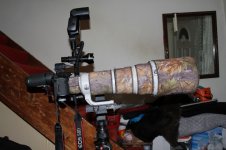I became interested in thermographic cameras shown on some recent nature documentaries. Anybody has any experience with similar things?
Do birds show on these camers?
Can they be used find birds skulking in dense vegetation during the day?
Can they be useful for finding nightbirds?
Are their cost anywhere around practical?
Yes, we have tried a thermal imaging camera.
No, we could not see the birds.
Vegetation is almost certainly a big problem.
A few years ago the Game and Wildlife Conservation Trust (GWCT) very kindly lent me their thermal imaging camera to try just this. We were trying to find skylark, to find their nests in short crops of winter wheat. In that context, it did not work, we could not see the birds at all - birds would get up which we had failed to detect.
We could see hares, quite easily.
We thought that birds might be too well insulated to be detected - they are much better insulated than mammals; and/or that vegetation might be screening them - the vegetation was short and we used an elevated viewing position but vegetation does block infra-red wavelengths; and/or that they were just too small - we did not trouble to try, say, geese or swans to test the issue specifically, the why's were not that relevant to us.
Granted this was a few years ago and technology surely must have changed. Even since GWCT's purchase of this equipment things had changed. When asked initially GWCT raised an issue over insurance as the camera had cost them (IIRC) £20k. This issue was dropped when it was found that direct replacement would then cost (again IIRC) £2k.
Even if technology has advanced somewhat, I suspect thermal imaging equipment might not be the best investment for finding birds.
Mike.





